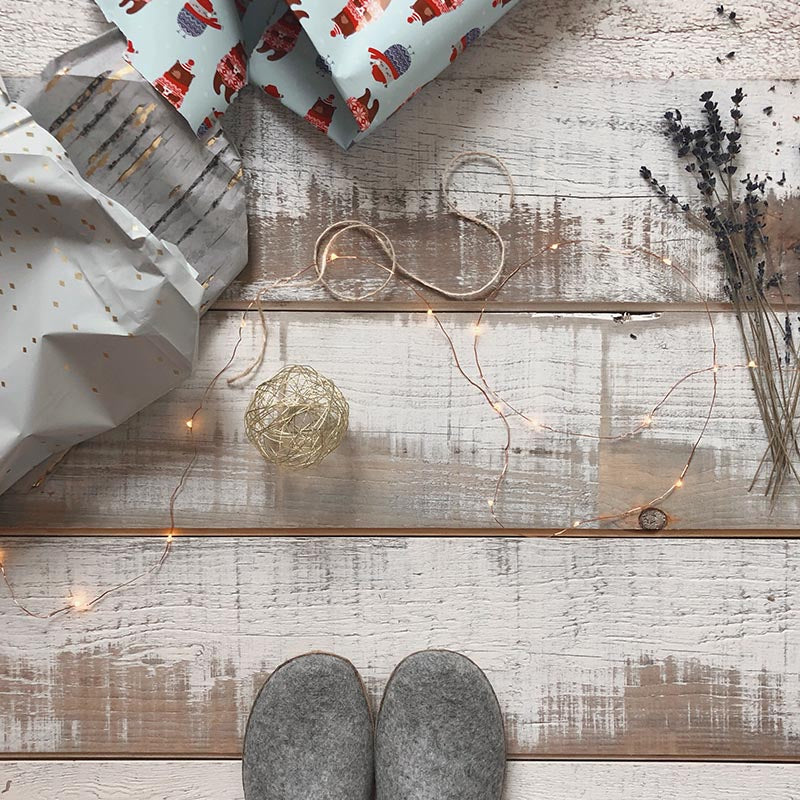By now, we all recognize the familiar arc of the holiday story: the buildup that seems to whip our kids into a frenzy, the excitement of finally opening those presents, and the slow pace of the days that follow, where everyone unwinds before the new year begins.
While we all feel the effects of this whirlwind, it really does hit kids a bit harder, as they may not yet be able to put words to all those emotions they may be feeling, and probably are not able to grasp all the subtleties that make the holidays what they are. So what happens now? For some kids (and let’s not forget parents), the onslaught of new toys to play with can be completely overwhelming – and what about the old toys??
Here are a few ideas to try and help your kids navigate this question, so you can all start the year off with some exciting opportunities for learning through play.

Make a new connection
Telling a story is essentially drawing a path, making connections between things. Sometimes, those connections are obvious, but really good stories often surprise us with a connection we hadn’t yet imagined.
Look around at the old toys – is there anything you can connect to something new? You can help your child learn to see this kind of thing as an opportunity for a much bigger story. Maybe the old building blocks could be used to make secret boxes or hiding places for the new magic tricks?
By planting just a small seed, you can help your child see how they can create something new, using what they already have. This can breathe new life into old toys, and can really flex the creative muscle.
Ask questions instead of telling the story yourself
This can make all the difference: having to answer a question invites your child to think about things in a new way, or even to think about things they’ve never considered before. This is the brain work that will lead to independent play: children who learn to tell their own stories rarely report feeling bored or needing someone else’s direction to play.
Practice grouping and organization
This is the perfect opportunity to invite your kids to help organize their own toys. Ask questions about how things can be grouped: what colour are these? When do you use these ones? Which ones are biggest?
If you already have a system in place, ask your kids to help decide where to put the new toys: which bin does this belong in? Should this go on a shelf? These are invaluable skills, and it is never too early to learn to put away your own toys!
Find a new home for a few things
After the holidays can be a good time to talk about things like gratitude, and wanting to share what we have with others. Rather than just making room for more things, you can talk with your kids about sharing one or two of their toys that they really don’t play with anymore.
It may help to be specific – maybe suggest a younger sibling, or a friend with a younger sibling who would love to give that toy a new home. This can help kids develop empathy for others, and even for their toys. Wherever possible, be sure to let your kids decide which toys they are ready to share and who they would like to pass them on to.
Make something new together
Try taking out some markers and an old sheet or piece of canvas and drawing your own play mat that can be used to bring together old and new toys together. Drawing a neighbourhood for example is a great way to pull out old cars and use new blocks to build buildings. It will also get your littles thinking about what kind of neighbourhood they want to live in. Is there a school? Where does the food come from? Is there an ice-cream store somewhere nearby? This kind of activity can lead to hours of creative storytelling play.

Toy Rotation
Toy rotation can be a wondrous thing, especially after the holidays. Start by selecting some toys that haven’t really made an appearance in a while and put them away out of sight. In a month or so, you can bring them out and swap them with another small bunch. You can get as intentional as you’d like here, curating a set of toys to try and encourage certain types of play.
This can really help kids who feel overwhelmed by too many choices – you might hear them say, "I don’t know what to play!" Fewer options can lead to easier choices. It can also lead to putting toys together in new ways to create different stories.
What about you?
Do you have any tried and true suggestions for dealing with the holiday toy aftermath? We'd love to hear them in the comments or tag us on Instagram with your best post-holiday play tips #gogoandmartin_play
Here's to a new year with fewer, better toys! Play well, friends.
xx gogo and martin


1 comment
Cherishing the most innovative beautiful toys that encourage and trigger endless themes for the young ones infinite imaginations.
Congratulations!
Leave a comment